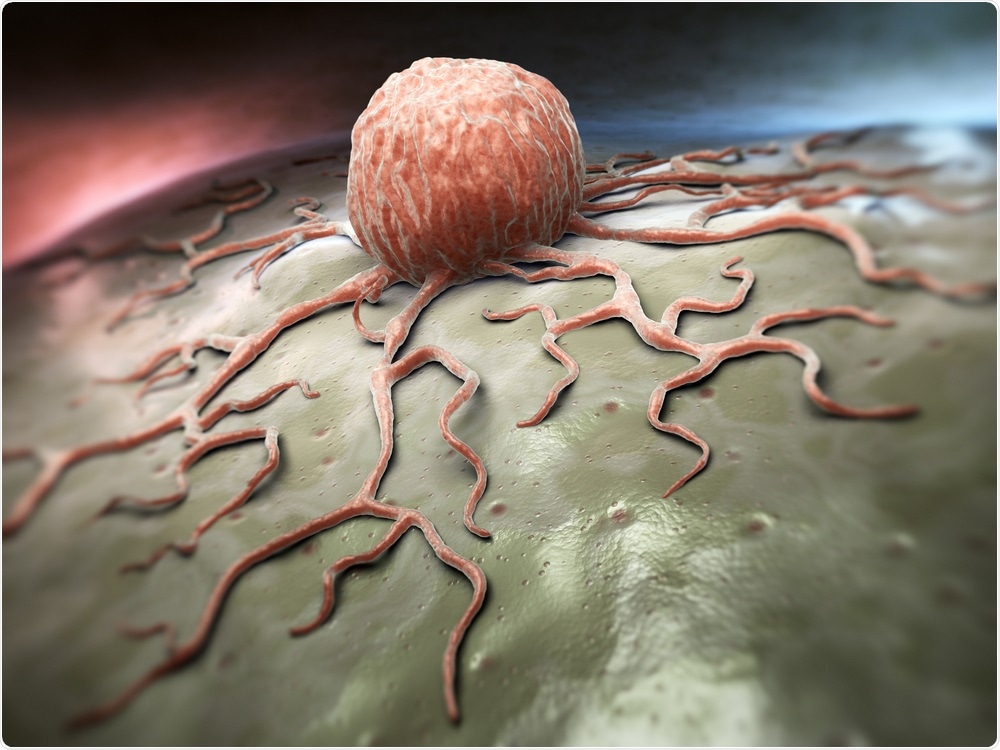Researchers analyzed 13,000 tumors, highlighting two formerly overlooked genes as promising new therapeutic targets for treating cancer. They also discovered promising new therapeutic targets for infertility in men.

Image Credit: Tatiana Shepeleva/Shutterstock.com
These discoveries can be attributed to the most detailed evolutionary analysis of RNA modification proteins performed so far. The study was recently published in the Genome Biology journal.
RNA, life’s fundamental basic molecule, plays a key role in expressing, regulating, coding, and decoding the genes preserved in DNA. Cells usually alter the constituent code of the RNA for a particular purpose, like tagging the molecule for degradation, or labeling it so that the immune system detects and does not destroy it.
If an RNA molecule is modified, it can significantly affect the fate of a living organism such as its sex, development, or circadian rhythm. Around 100 different human diseases are associated with defects that occur in the process of RNA modification.
RNA modification proteins, or RMPs, have a significant role to play in the process, by removing or adding chemical groups to the sequence and modifying the original code copied from the DNA.
New technological breakthroughs have now made it possible to analyze how and where the RNA is actually edited and altered, resulting in the budding field of “epitranscriptomics.”
For this research, the scientists at the Centre for Genomic Regulation in Barcelona conducted the most detailed evolutionary analysis of human RMPs ever made, exploring their behavior across10 species, 32 tissues, and 13,358 paired tumor-normal human samples. The team observed that RMP expression differs considerably over different types of tissues, types of cancer, and stages of cancer.
Genes coding for RMPs were specifically over-expressed in testicular tissue. Most of the RMPs were expressed at the earliest phases of the formation of sperms but some were expressed in more advanced stages, like the ADAD1 or NSUN7 proteins.
The deficiency of such proteins can lead to infertility and thus can potentially be used as upcoming therapeutic targets for infertility.
It was observed that two RMPs were profoundly expressed in the epididymis, which is the tissue linking the ejaculatory duct and the testes. TRDMT1 is one of the RMPs known to play a key role in transmitting paternal epigenetic data across many generations.
According to scientists, the outcomes provide clues about the way RMPs transmit environmental data such as diet or stress through sperm. The research also examined the role of RMPs in cancer. The scientists examined the expression of the RMP gene across 13,358 samples from as many as 28 different types of human tumors.
In cancers, 27% of all known human RMPs were dysregulated, and this percentage is considerably more than anticipated. The two most frequently over-expressed genes over different types of cancer were LAGE3 and HENMT1.
These genes were continuously over-expressed in tumors at different stages of development, especially in stages III and IV, and can serve as potential drug targets for anti-tumor treatments.
Eva Novoa, the study’s lead author and a researcher from the Centre for Genomic Regulation, reported that certain cancer drugs, like the potential application of FTO inhibitors used for treating glioblastomas, have already targeted the RNA modification machinery for tumor treatment.
Such drugs have gained a great deal of attention in the past few years and this can be attributed to the abundance and easy detection of the RNA modifications that are targeted by them.
Here we provide a short-list of RMPs that constitute promising drug targets in specific cancer types. We hope our work will inspire new lines of research in antitumor therapies. We already have important drugs like FTO inhibitors that use the machinations of RNA modification to treat cancer. It’s exciting to point to several other overlooked pathways that could be future therapeutic targets.”
Eva Novoa, Study Lead Author, Centre for Genomic Regulation
“Our next steps are studying the role of RNA modification in transmitting diet-induced metabolic disorders from one generation to the next. Understanding how environmental information is converted into molecular information in sperm RNAs, and then transmit across generations, is the next exciting and unanswered question,” Novoa concluded
Source:
Journal reference:
Jo, S-Y., et al. (2020) Impact of mouse contamination in genomic profiling of patient-derived models and best practice for robust analysis. Genome Biology. doi.org/10.1186/s13059-019-1849-2.